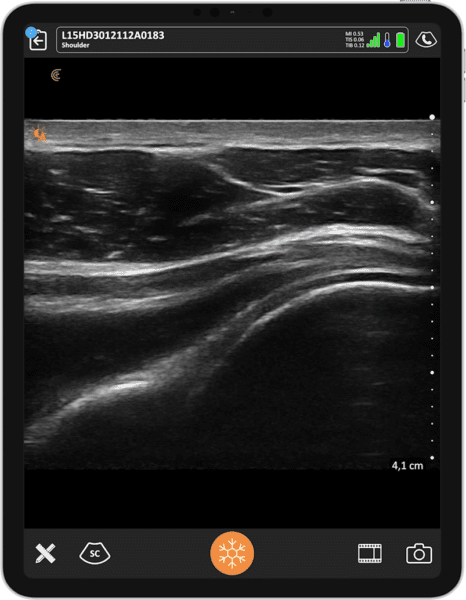By providing my email, I consent to receive Clarius webinar invitations, case studies, whitepapers, and more. I can unsubscribe anytime. Privacy Policy.
FREE WEBINAR
Pragmatic MSK Ultrasound: Dynamic Assessment of the Shoulder
Watch On-Demand
Watch Now
Join renowned SonoSkills founder and educator Mr. Marc Schmitz as he teaches dynamic ultrasound techniques to enhance the static rotator cuff examination.
In this 1-hour webinar, learn MSK ultrasound scanning skills that you can use on your next patient for a comprehensive and functional assessment of the shoulder joint. Join expert sonographer Mr. Schmitz as he explains:
- Anatomic detail of the rotator cuff using a cadaver
- Scanner and patient positioning for optimal ultrasound imaging
- Muscle, tendon, and bony sonoanatomy for a comprehensive shoulder joint examination
- Effective dynamic movements required to best assess the shoulder joint
- How to diagnose impingement syndromes and other pathologies with dynamic imaging

In patients presenting with shoulder pain, dynamic imaging with functional movements can provide valuable information and enhance the static shoulder ultrasound exam. SonoSkills educator Mr. Schmitz demonstrates scanning techniques and share pathology using high-definition wireless ultrasound to help hone your MSK scanning skills for a confident diagnosis.
High-resolution ultrasound can be very helpful in identifying the cause of shoulder pain, but static imaging doesn’t always reveal pathology, particularly when conditions are dynamic in nature. Real-time ultrasound is the only imaging modality that can provide an accurate assessment of impingement and other dynamic conditions. Mr. Schmitz shows how this can be accomplished.
In the first patient video he presents, Mr. Schmitz provides an overview of anterior shoulder ultrasound techniques, including the biceps tendon and its supporting structures, the rotator interval, and the subscapularis tendon.
Next, Mr. Schmitz demonstrates how to locate and scan the coracoacromial ligament and the supraspinatus tendon, with abduction and adduction movements that help rule out impingement. He includes a description and assessment of the supraspinatus muscle, which can reveal secondary signs of tendon damage.
Another important component of the shoulder ultrasound is the AC joint. In the third patient video, Mr. Schmitz examines the AC joint and posterolateral shoulder structures, including the infraspinatus tendon, muscle, and dorsal spinoglenoid joint. Learn how dynamic movements can help rule out AC joint instability and fluid collections in the joint capsule.
Marc is joined by your host Dr. Oron Frenkel. They show you how to take your shoulder imaging stills to the next level with high-resolution wireless ultrasound. Learn dynamic movements you can use for your next shoulder ultrasound exam for a better overall assessment. Don’t miss this webinar – watch now!

Founder & CEO of SonoSkills
Marc Schmitz, MSc
During his MSc. at the Faculty of Medicine and Pharmacy at the Vrije Universiteit Brussel, Marc’s interest in functional human anatomy grew tremendously while dissecting and studying cadavers. It was here that his interest in observing functional human anatomy in “real-time” peaked, which led to the start of embracing musculoskeletal ultrasound. After completing numerous courses and attending conferences on the topic, he started developing his own course and SonoSkills was formed in 2010. Since then SonoSkills has taught its courses in 30 countries. Marc’s team consists out of 22 expert trainers. He teaches, next to managing SonoSkills, the foundational course and some intermediate level courses. Marc has a special interest in the shoulder joint.

Emergency Physician
Oron Frenkel, M.D., M.S.
Dr. Oron Frenkel completed his MS and MD simultaneously at the University of California Joint Medical Program in Berkeley and San Francisco, completing his residency in Emergency Medicine followed by a fellowship in Point-of-Care Ultrasound at Alameda County Medical Center in Oakland, California. He moved to British Columbia with the goal of increasing use of point-of-care ultrasound across the province, especially among rural practitioners. An avid educator, Dr. Frenkel is constantly evaluating the best teaching methods for disseminating this technology, how to measure competency in its practice, and its effects on outcomes for individual patients. Dr. Frenkel serves as Chairman of the Clarius Medical Advisory Board.

